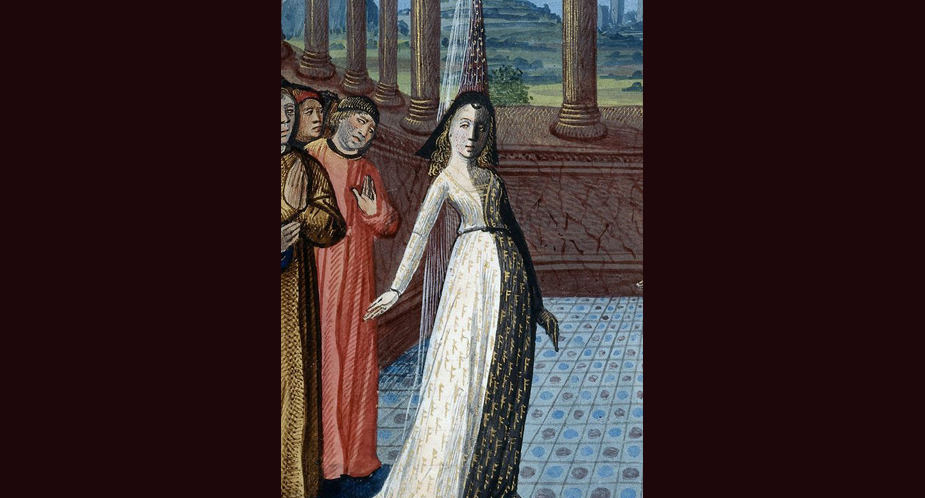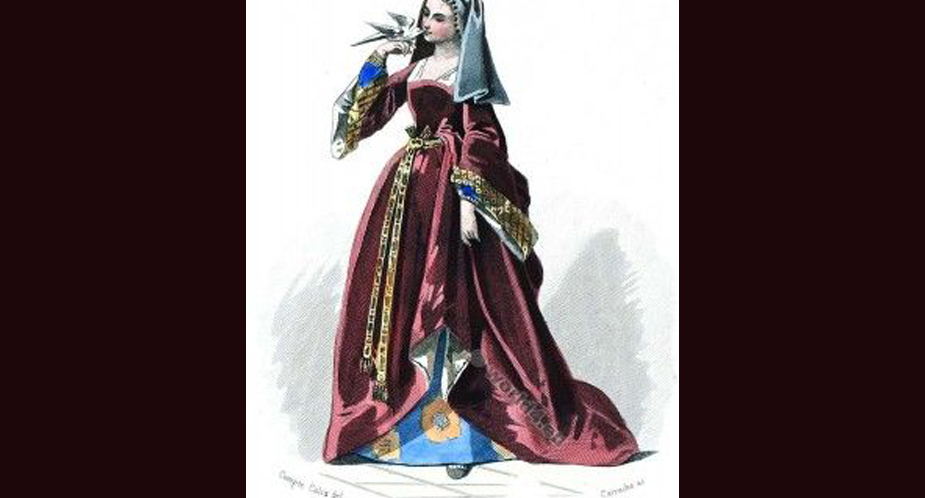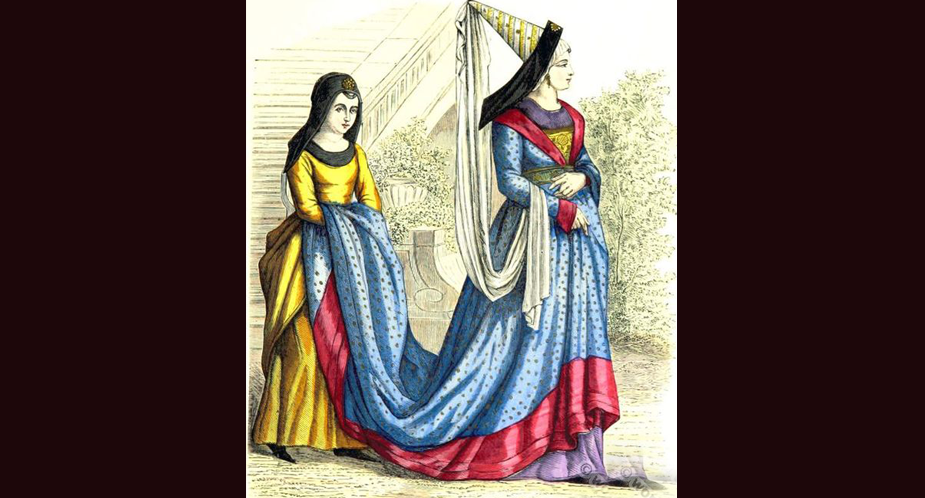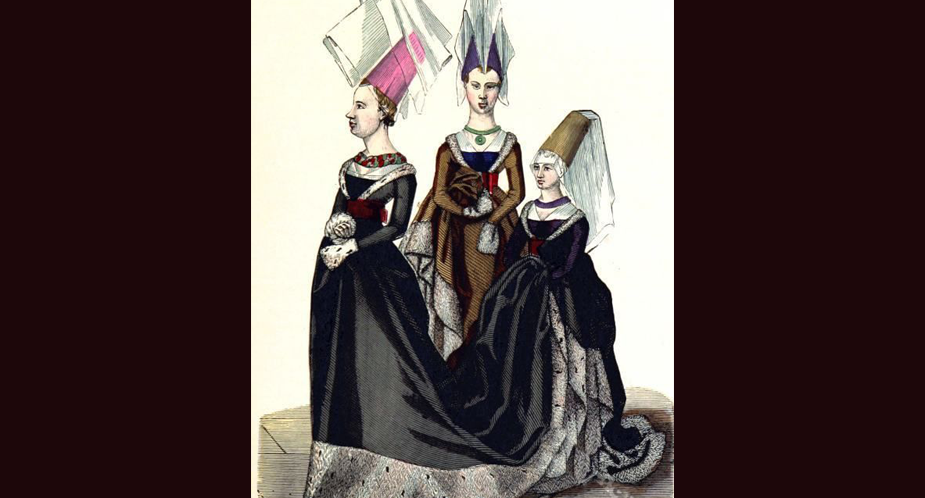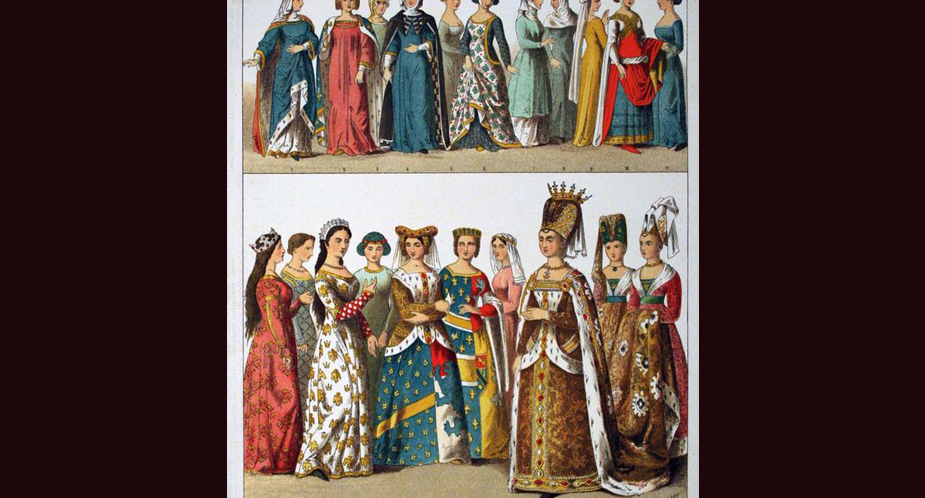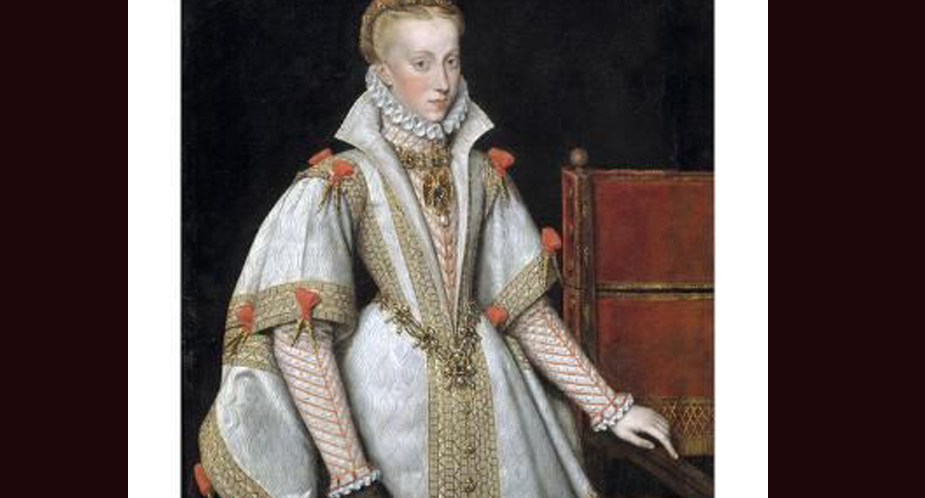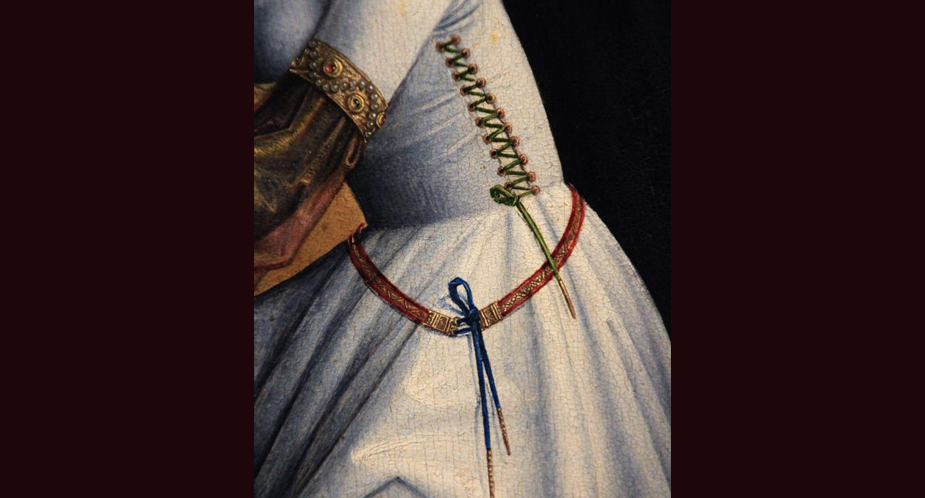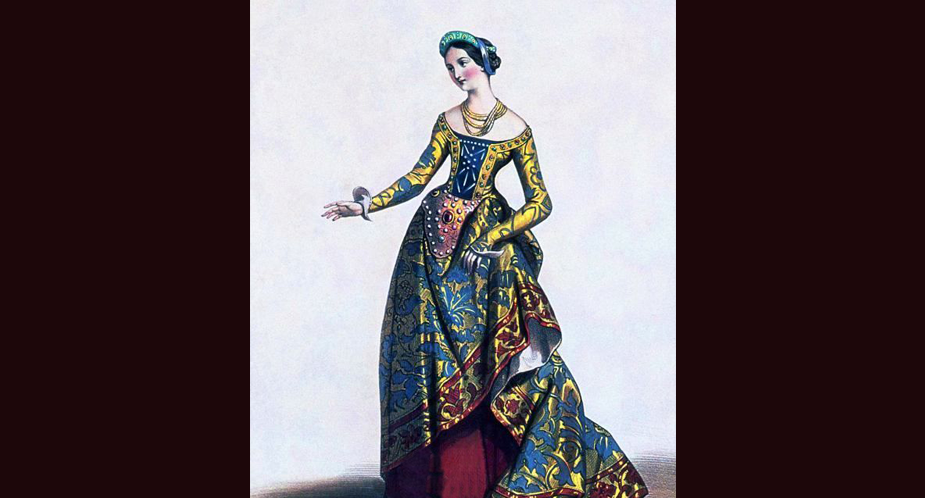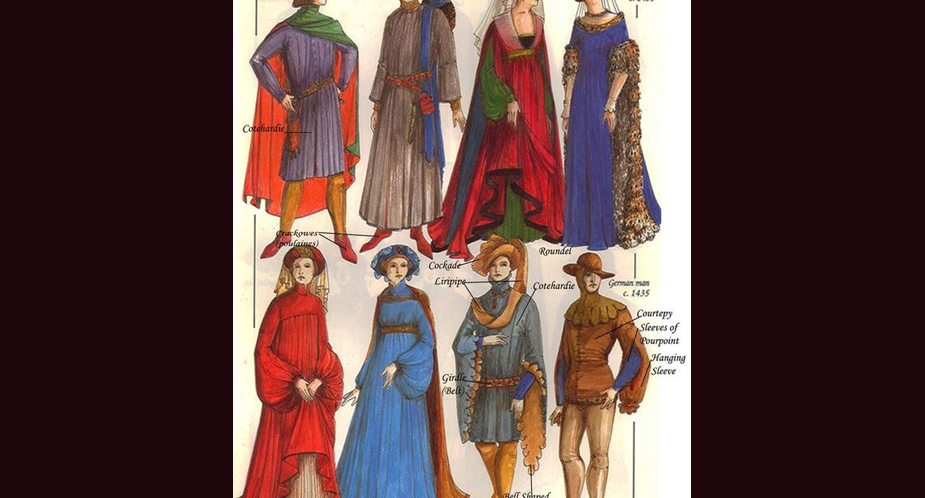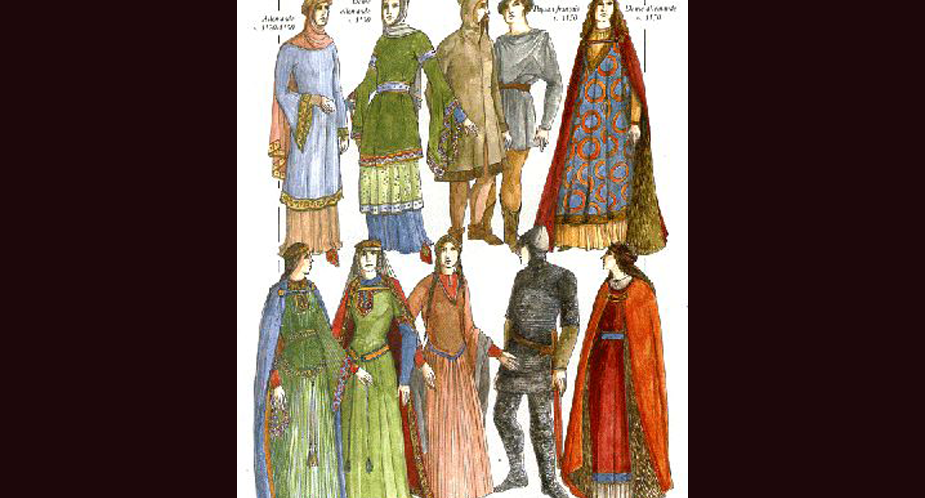… the long, spiring, Medieval lines of fashion had stretched to their limits with peaked shoes, tall hats, and vertical lines. As the 16th century (year 1500) approached, the silhouette broadened and widened. The Renaissance “style” spread from the south in Spain and Italy towards northern European countries. (Painting: 1470 …
